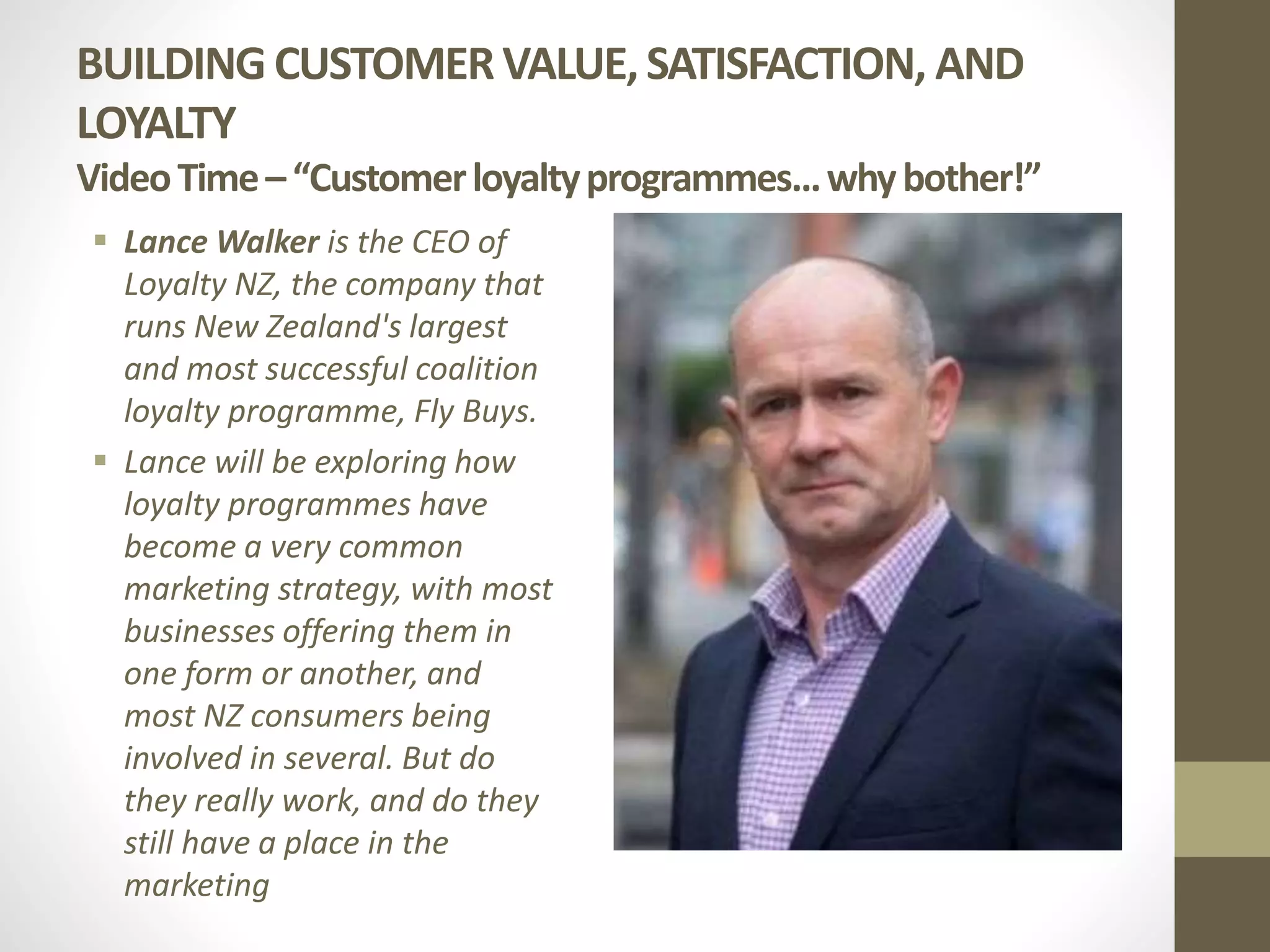- Customers are value maximizers who choose options that provide the highest perceived benefits relative to costs. Companies must understand how customers value their offerings compared to competitors.
- Customer satisfaction results from a product meeting or exceeding expectations. High satisfaction leads to loyalty, so companies must ensure expectations are met.
- Retaining existing profitable customers is less costly than acquiring new ones, so relationship marketing is key. Lifetime customer value analysis helps maximize profitability.















































































































































































































